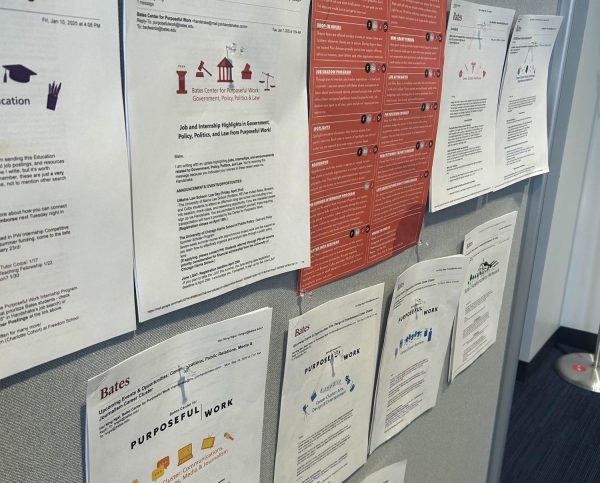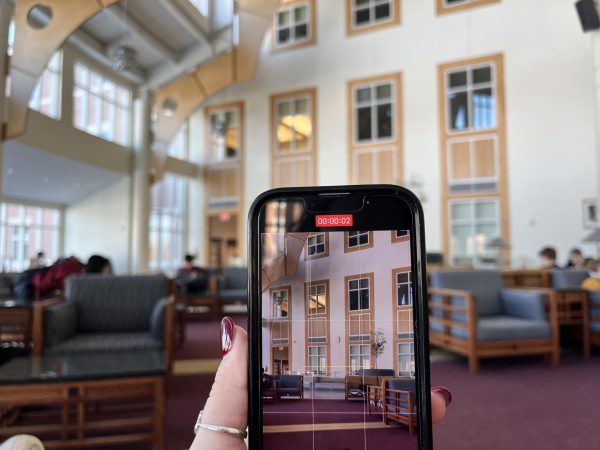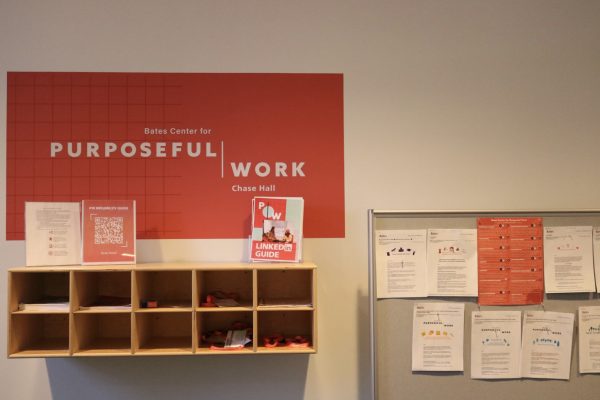A Liberal Bastion Of Inequality: Income Disparity At Bates
It is oftentimes far easier to condemn than to commend. With that being said, it is also easier in times of calamity to run to one’s corner instead of facing tumult head-on. The latter truism is often compounded when the problem faced is self-induced, but promulgated as otherwise.
This makes criticism hard to stomach, but in the case of Bates College, we must first seek to change who we are before we change the world, even if that change is disagreeable to the college. That is, our actions need to line up with our values. For, according to Tolstoy, “Everyone thinks of changing the world, but no one thinks of changing himself.”
This article will deal mainly with socio-economic inequality that permeates Bates, and how we, as a community, ought to be putting an end to it. It will look at other exemplary schools, contradictions within our expressed mission statements, the “how” from a financial perspective, and why socio-economic inclusivity matters. It is important to note that this is only a segment of building inclusivity at Bates, and is not an attempt to undercut the need for diversity and other forms of inclusion.
One of the best barometers for measuring a school’s commitment to low-income students is the number of students receiving Pell Grants. To qualify for Pell Grants, a student’s annual family income must be $40,000 or less. A school that stands out in this field is Vassar College in Poughkeepsie, N.Y.
Nearly 25% of Vassar’s student body receives Pell Grants, and 60% receives some form of financial aid. To give some perspective, only 9% of the Class of 2024 receives Pell Grants and 37% receive Bates financial aid, which is given on a need basis and guarantees that 100% of said need is met. This is abysmal; it means that Bates is homogenous, in a socio-economic sense, which runs counter to the college’s frequently used quip about the “transformative power of our differences.”
The United States has higher income inequality than any other G7 country; the country desperately needs a more equal distribution of wealth. As it relates to education, it has been shown time and time again that going to college boosts earnings. Thus, we can reasonably assume that by expanding education access to lower-income students, Bates could effectively help to counter income inequality.
Before you say that Bates is like every other institution that doesn’t value the poor, and thus inculpable, think again. Bates’ proportion of students from the bottom sixty percent of annual family incomes is among the lowest compared to peer institutions, according to The New York Times.
All the while, the question of how to pay for lower-income students persists, though it shouldn’t have to. If Bates decided to increase the number of students receiving Pell Grants by five to ten percent, they would have to assume a financial loss. Yet, this loss could be offset in the same way institutions pay for a new building: with a capital campaign for Pell Grant students.
This would help to generate good public relations and create a sense of community that would help to set a precedent for future giving. Some may scoff at such a suggestion, citing the meager endowment, but they likely forget Bates’s neighboring institution, Colby, recently used their alumni network to help find jobs for the entire class of 2020. As Bates seeks to be more inclusive with regard to lower-income students, they must draw on their alumni network for support.
This change won’t happen overnight. Bates will have to plan into their future budget a gradual shift in Pell Grant students. The said plan will require that Bates hit a target number, albeit a modest one. The Class of 2024 saw a fall in Pell Grant recipients. Whether this be random, or a bi-product of economic downturn, Bates can build in contingency plans that shore up funding for the Pell Grant initiative.
Or, as it might just happen, Bates could stay quiet on the matter. They could continue on the path of inviting the same wealthy students to their campus, and thus perpetuate the practice of preserving wealth in the hands of the fortunate few. They could do this as long as there are wealthy individuals to pay.
Yet, what Bates won’t be able to do, if they continue this practice of inequality enhancement, is advertise in good faith that they are an open and inclusive community. Bates won’t be able to say, in earnest, that they care for everyone.
They won’t be able to tell their alumni this. They won’t be able to tell this to their prospective students they lead on tours through Alumni Walk as they marvel at the foliage. They won’t be able to say this to their professors, who teach constantly about the need for a more fair and equal society. They won’t be able to tell this to staff workers who do so much for so little. Ultimately, Bates won’t really be Bates, as it purports itself to be.
Whenever I consider the predicament facing Bates College, I am reminded of some words by Paul Farmer, an internationally renowned health expert, who once said, “The idea that some lives matter less than others is the root of all that is wrong with the world.” I’d like to think that the students, staff, faculty, and administrators know this.
Your donation will support the student journalists of Bates College and help us cover our annual website hosting costs.

Gabriel is a senior from Bangor, Maine, majoring in politics. He is currently working on a senior thesis examining conditional and unconditional responses...







Tom Mortenson • Oct 15, 2020 at 7:36 AM
Income inequality is ripping our country apart. The rich are getting much richer, and the poor are getting much poorer. This process has been proceeding unabated for over half a century. Higher education has been called the engine of division, because it strongly favors children born into affluence and disfavors everyone else. According to the most recent annual report by The Pell Institute for the Study of Opportunity in Higher Education, about 16% of children from the bottom quartile of family income will complete a bachelor’s degree by age 24, compared to 62% of children born into the top quartile of family income. So I offer a suggestion for Bates: How about offering admission to Bates through a lottery?
P.S. My thanks to Bates for providing a great education to my own daughter–now a college professor.